Smoking pork ribs is a culinary art that has been cherished for centuries. The process usually involves slow-cooking the ribs over indirect heat and wood smoke, resulting in tender, flavorful, and succulent meat that falls off the bone. If you have a Pitt Boss Smoker (I used a vertical Pit Boss pellet smoker like this one), the job gets even easier—set it and (mostly) forget it!
Whether you’re a seasoned pitmaster or a beginner, smoking pork ribs is an experience that brings together the joys of cooking, the love of barbecue, and the satisfaction of sharing a delicious meal with family and friends.
Enjoy!
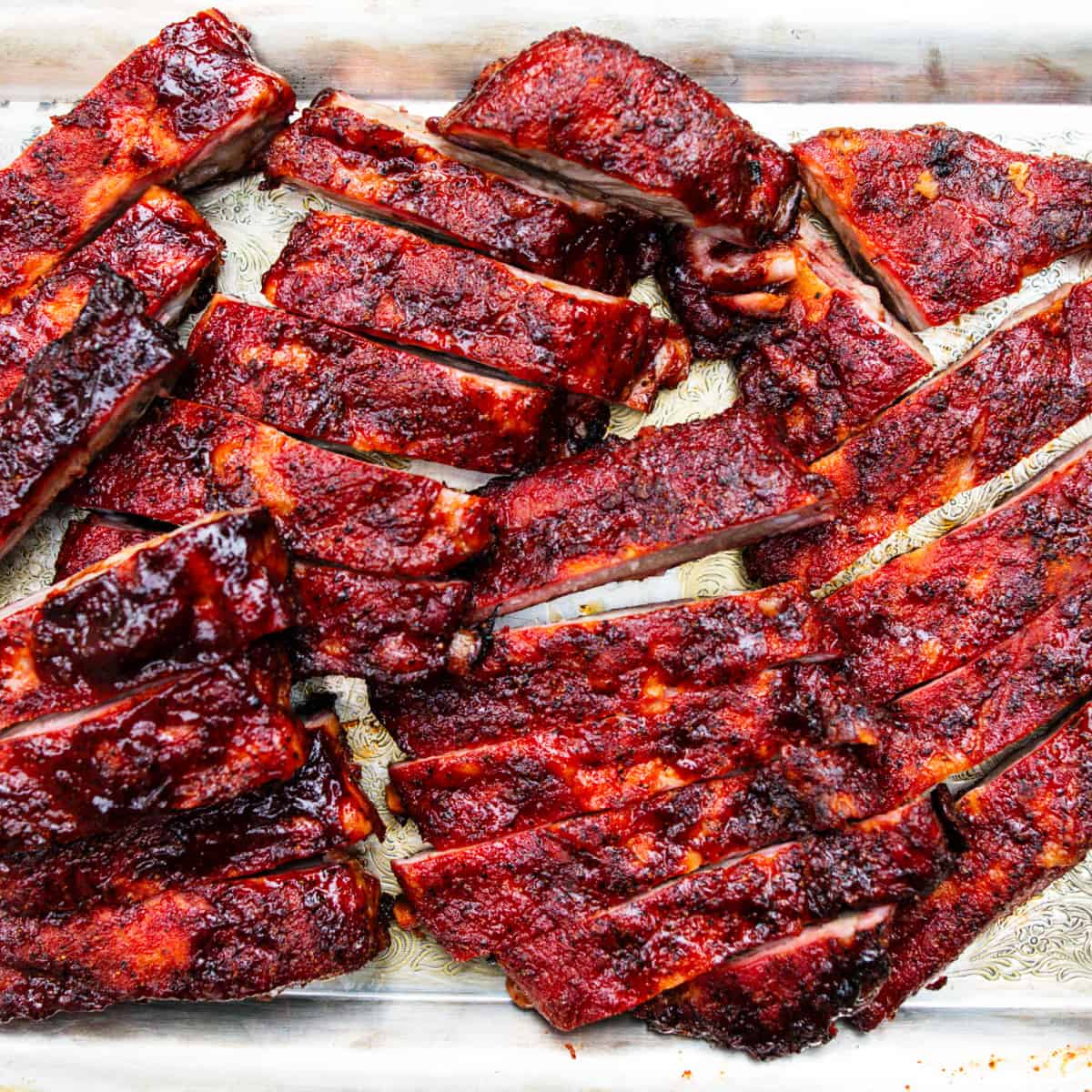
Why You Should Cook These Ribs On Your Pit Boss Smoker (Or Any Other Smoker!)
- Good ribs benefit from a low-and-slow approach to cooking. If you tried grilling your ribs, they’d end up way too tough. By using a Pitt Boss pellet smoker like I did (any smoker will work, of course), you can set your temp in the afternoon, and come back to a great dinner (with a few check-ups).
- Pork spare ribs are affordable, and delicious when cooked well.
- These ribs are cooked in a dry rub, and then finished with a sweet and sticky barbecue sauce glaze, ensuring that they’re seasoned all the way through.
- Each rib is only 6 WW points according the the WW recipe creator app (not including the BBQ glaze).
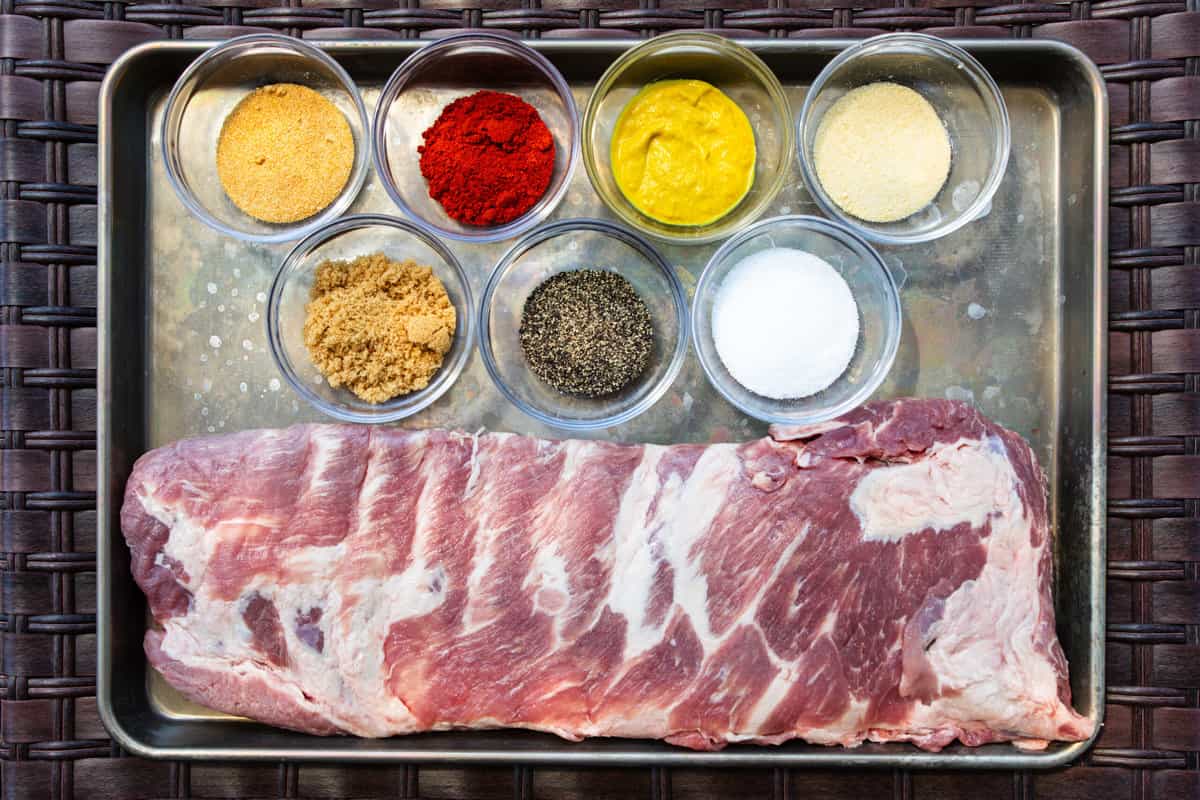
Ingredients
- 1 rack of pork spare ribs
- 2 tablespoons brown sugar
- 2 tablespoons kosher salt
- 1 tablespoon black pepper
- 1 tablespoon paprika
- 1 tablespoon garlic powder
- 1 tablespoon onion powder
- 2 tablespoons yellow mustard
- Optional: BBQ sauce for finishing
Steps to Making The Best Smoked Ribs
1. Prepare the Dry Rub
- Mix all brown sugar, salt, pepper, paprika, garlic powder, and onion powder in a bowl until evenly distributed.
2. Prepare the Ribs
- Remove the membrane from the bone side of the ribs with a sharp knife. This enhances flavor absorption and tenderness.
- Pat the ribs dry with paper towels, then apply a thin layer of yellow mustard over both sides of the ribs. This will help the seasoning adhere to the meat better. Don’t worry, the ribs won’t taste like mustard.
- Generously apply your chosen dry rub to both sides of the ribs. Massage it into the meat to ensure even distribution.
- Cover the seasoned ribs with plastic wrap and refrigerate for 30-60 minutes to let the flavors meld and the ribs to cool slightly.
- Measure the ribs and the dimensions of your smoker. If the ribs are going to be a tight fit across, cut the rack in half to make sure there’s plenty of space on all sides.
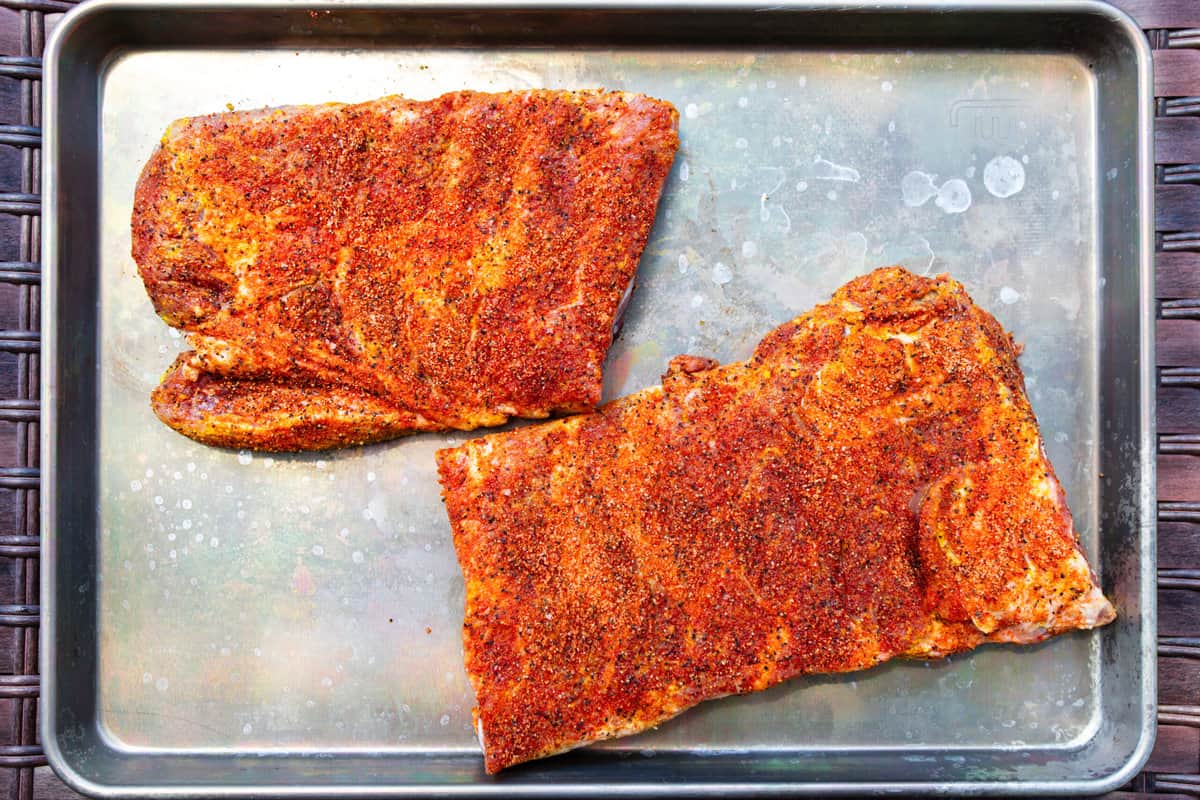
3. Prepare the Smoker
- Load your hopper then set the temperature to 225°. Let it run for 15 minutes to come up to temperature. If your Pitt Boss Smoker has a water pan, make sure it’s filled up to help
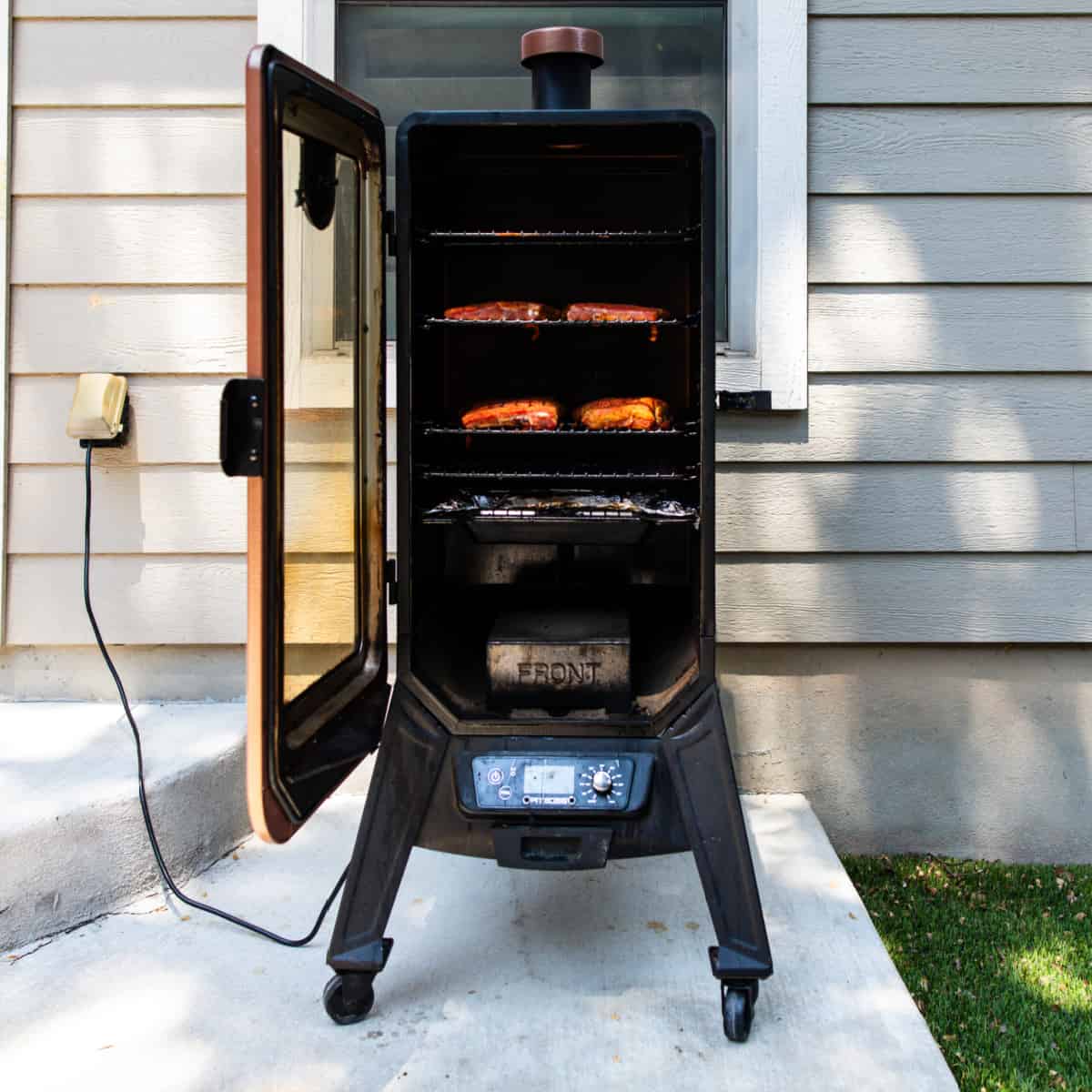
4. Smoke the Ribs
- Place the seasoned ribs on the smoker grates, bone side down.
- If you have a temperature probe, insert it into the thickest part of the meat, making sure not to touch any bones.
- Close the smoker’s lid or door and let the ribs smoke. Keep an eye on the smoker to make sure the temperature stays pretty consistent and no flare-ups occur.
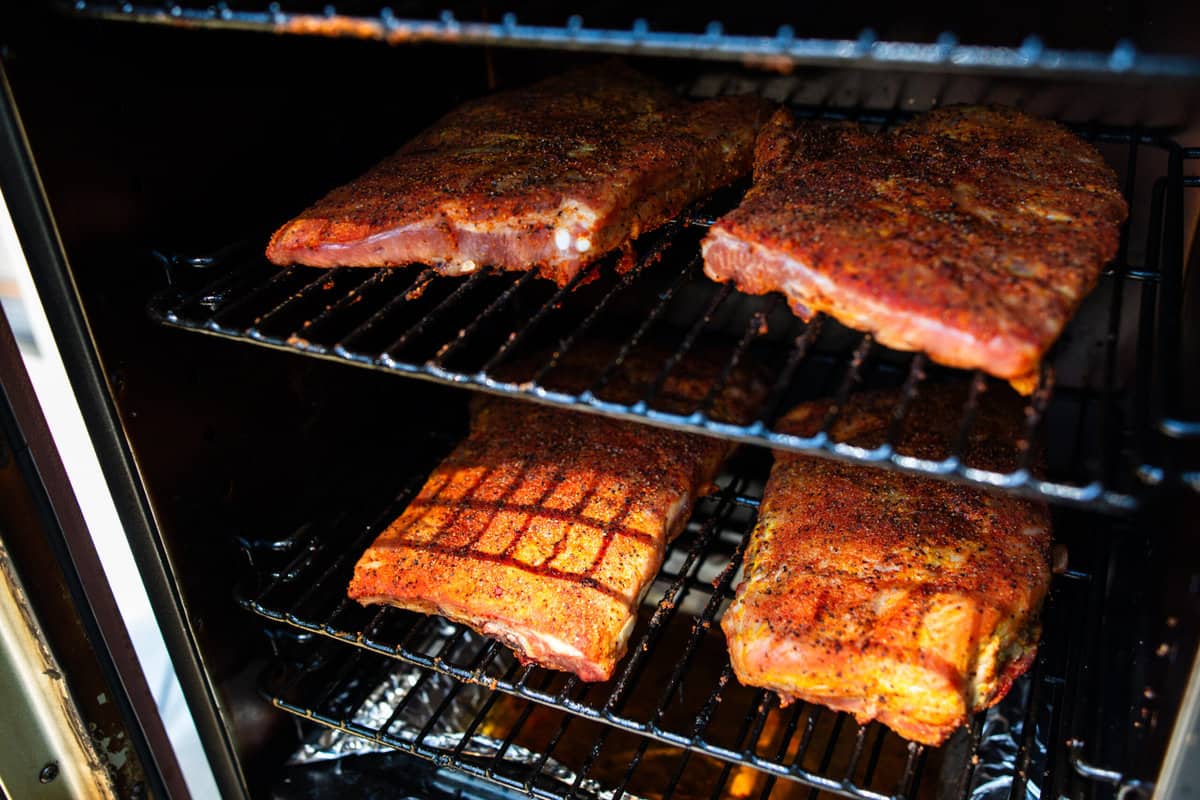
5. Check Doneness
- After about 3-4 hours, check on the temperature of the ribs. The meat should start pulled back from the bone ends, and a toothpick or probe should easily go into the meat with little resistance.
- Once the ribs hit an internal temperature of 190°-200°, they’re ready to eat. This can take anywhere from 4-6 hours, depending on the size of your ribs.
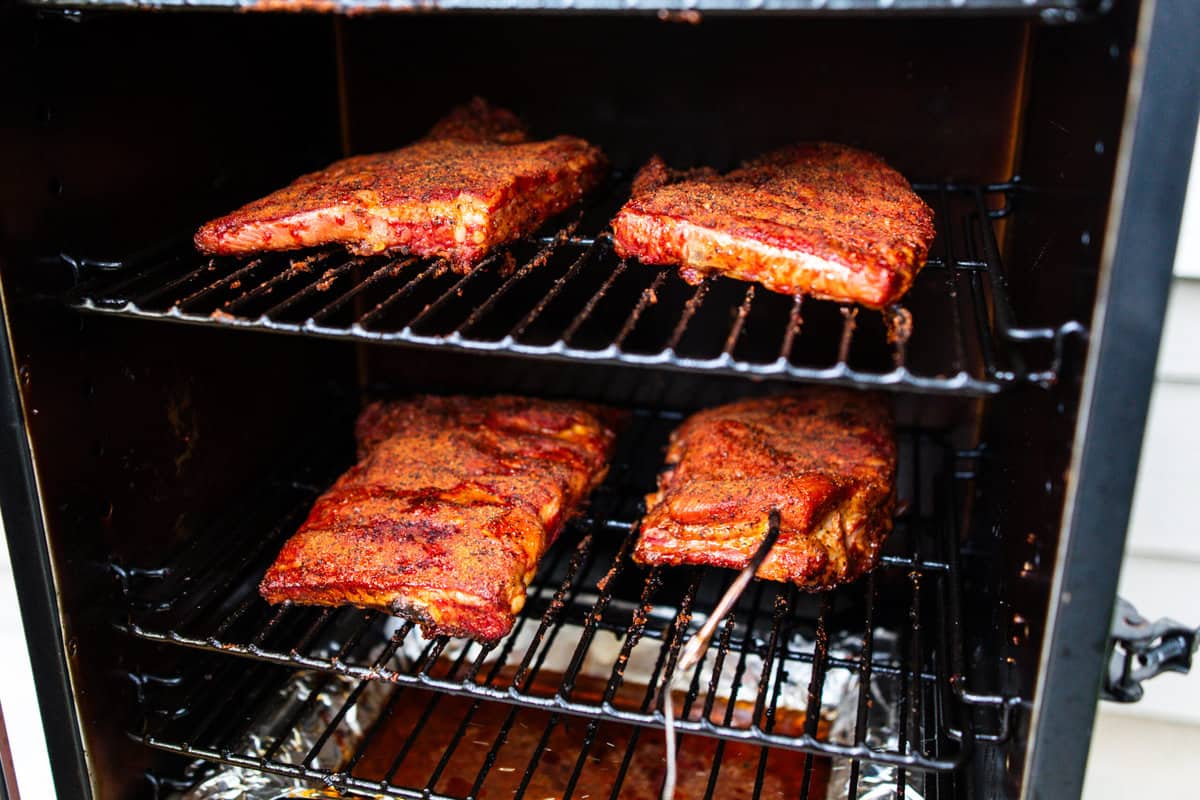
6. Glaze the Ribs (Optional)
- If desired, remove ribs from the smoker and brush a thin layer of barbecue sauce onto the ribs after they’ve hit an internal temperature of 190°.
- Place back into smoker and continue cooking for another 15 minutes to let the barbecue sauce set. Note, if you still have a temperature probe in, you may notice the temperature drop from the addition of cold barbecue sauce—this is normal.
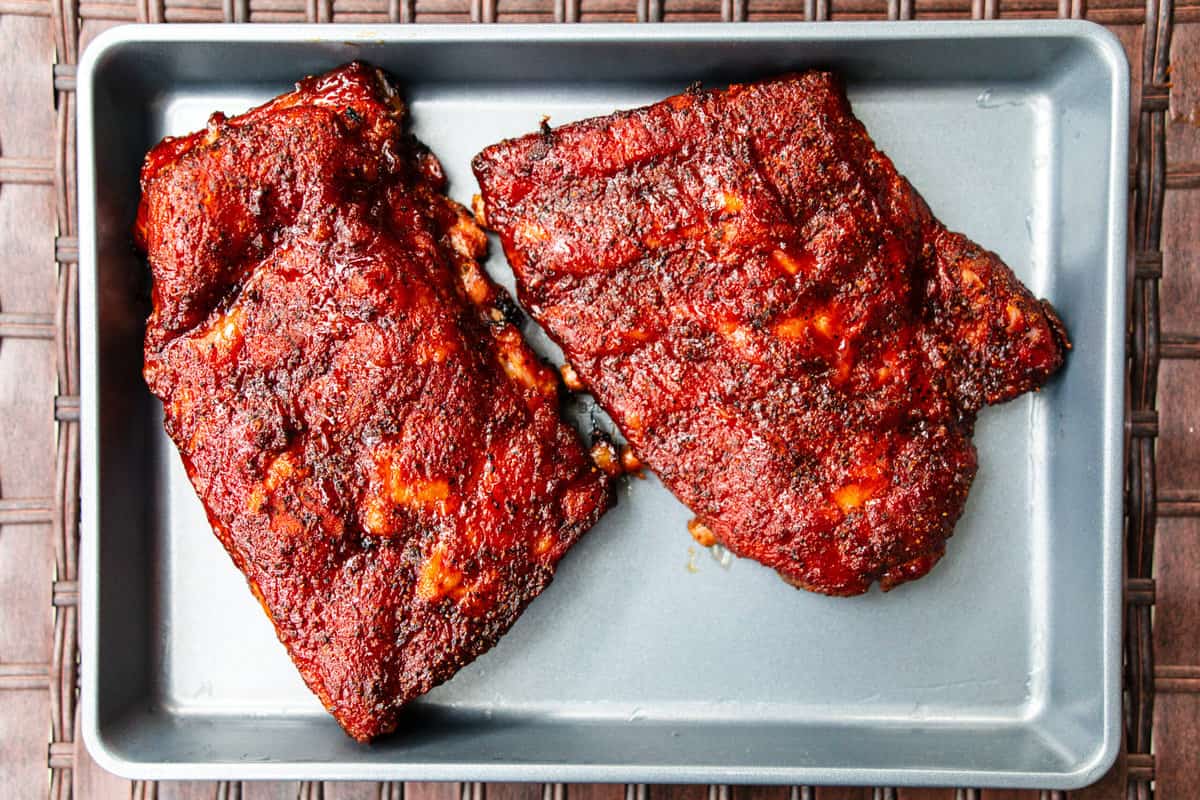
7. Rest and Serve
- Once the ribs are done, carefully remove them from the smoker and let them rest for about 10-15 minutes. This allows the juices to redistribute within the meat.
- Slice the ribs between the bones and serve them with your favorite sides.
Variations and Substitutions for Smoked Spare Ribs
- You can also try this recipe with baby back ribs. Follow all the same steps, but you’ll only need to cook them for 3-4 hours, instead of 4-6 hours.
- Watching carbs and/or sugar? Finish your ribs with sugar-free barbecue sauce to add a sticky glaze without the sugar.
- This recipe will produce ribs with a little bit of bite to them. If you prefer your rib meat falling off the bone, wrap them in foil with a little bit of apple cider vinegar or apple juice once they hit 165° and let them continue smoking until the internal temperature hits 200°.
Tips and Tricks
- Spraying Your Ribs: You can also try spraying your ribs with a 50/50 blend of apple cider vinegar and apple juice every hour. This is recommended for adding moisture if you don’t have a water pan.
- Pellet Variety: Experiment with different pellet types for unique smoky flavors.
- Patience Pays Off: Smoking takes time, so relax and enjoy the process. Don’t be tempted to crank up the temperature too fast or you may end up with dry meat.
- Safety First: The meat will be safe to eat once the internal temperature reaches 145°, but ribs are best cooked to at least 185° since the meat is very tough and requires a long, slow cook to break down the connective tissues.
Related Content
- 10 Things to Know Before Buying a Pit Boss Smoker
- 21 Mouthwatering Rack Of Pork Recipes
- 25 All-Time Best Pit Boss Recipes
Tender and Juicy Pit Boss Smoked Ribs
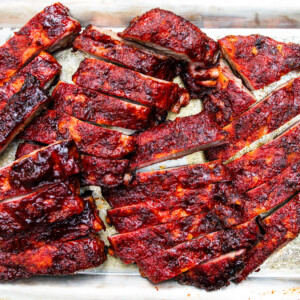
Equipment
- Smoker any type will work
Ingredients
- 1 rack pork spare ribs
- 2 tbsp brown sugar
- 2 tbsp kosher salt
- 1 tbsp black pepper
- 1 tbsp paprika
- 1 tbsp garlic powder
- 1 tbsp onion powder
- 2 tbsp yellow mustard
- BBQ sauce for finishing, optional
Instructions
Prepare the Dry Rub
- Mix all brown sugar, salt, pepper, paprika, garlic powder, and onion powder in a bowl until evenly distributed.
Prepare the Ribs
- Remove the membrane from the bone side of the ribs with a sharp knife. This enhances flavor absorption and tenderness.
- Pat the ribs dry with paper towels, then apply a thin layer of yellow mustard over both sides of the ribs. This will help the seasoning adhere to the meat better. Don’t worry, the ribs won’t taste like mustard.
- Generously apply your chosen dry rub to both sides of the ribs. Massage it into the meat to ensure even distribution.
- Cover the seasoned ribs with plastic wrap and refrigerate for 30-60 minutes to let the flavors meld and the ribs to cool slightly.
- Measure the ribs and the dimensions of your smoker. If the ribs are going to be a tight fit across, cut the rack in half to make sure there’s plenty of space on all sides.
Prepare the Smoker
- Load your hopper then set the temperature to 225°. Let it run for 15 minutes to come up to temperature. If your smoker has a water pan, make sure it’s filled up to help.
Smoke the Ribs
- Place the seasoned ribs on the smoker grates, bone side down.
- If you have a temperature probe, insert it into the thickest part of the meat, making sure not to touch any bones.
- Close the smoker's lid or door and let the ribs smoke. Keep an eye on the smoker to make sure the temperature stays pretty consistent and no flare-ups occur.
Check the Doneness
- After about 3-4 hours, check on the temperature of the ribs. The meat should start pulled back from the bone ends, and a toothpick or probe should easily go into the meat with little resistance.
- Once the ribs hit an internal temperature of 190°-200°, they’re ready to eat. This can take anywhere from 4-6 hours, depending on the size of your ribs.
Glaze the Ribs (Optional)
- If desired, remove ribs from the smoker and brush a thin layer of barbecue sauce onto the ribs after they’ve hit an internal temperature of 190°.
- Place back into smoker and continue cooking for another 15 minutes to let the barbecue sauce set. Note, if you still have a temperature probe in, you may notice the temperature drop from the addition of cold barbecue sauce—this is normal.
Rest and Serve
- Once the ribs are done, carefully remove them from the smoker and let them rest for about 10-15 minutes. This allows the juices to redistribute within the meat.
- Slice the ribs between the bones and serve them with your favorite sides.
Notes
Nutrition
Nutrition information is automatically calculated, so should only be used as an approximation.

